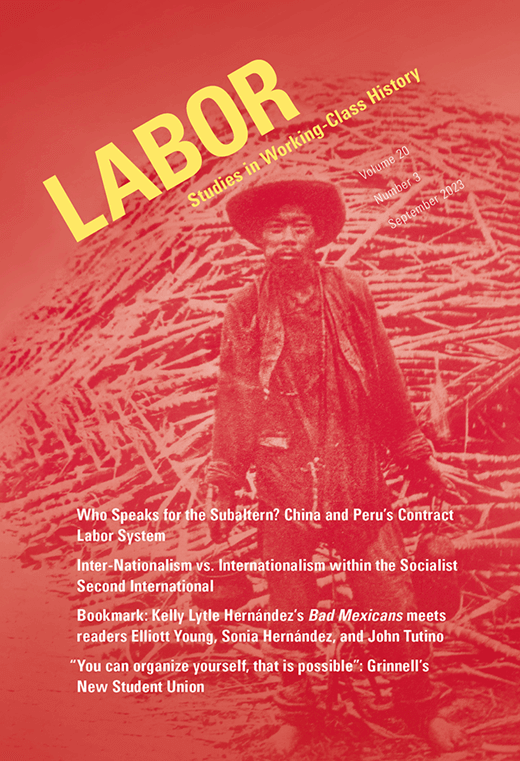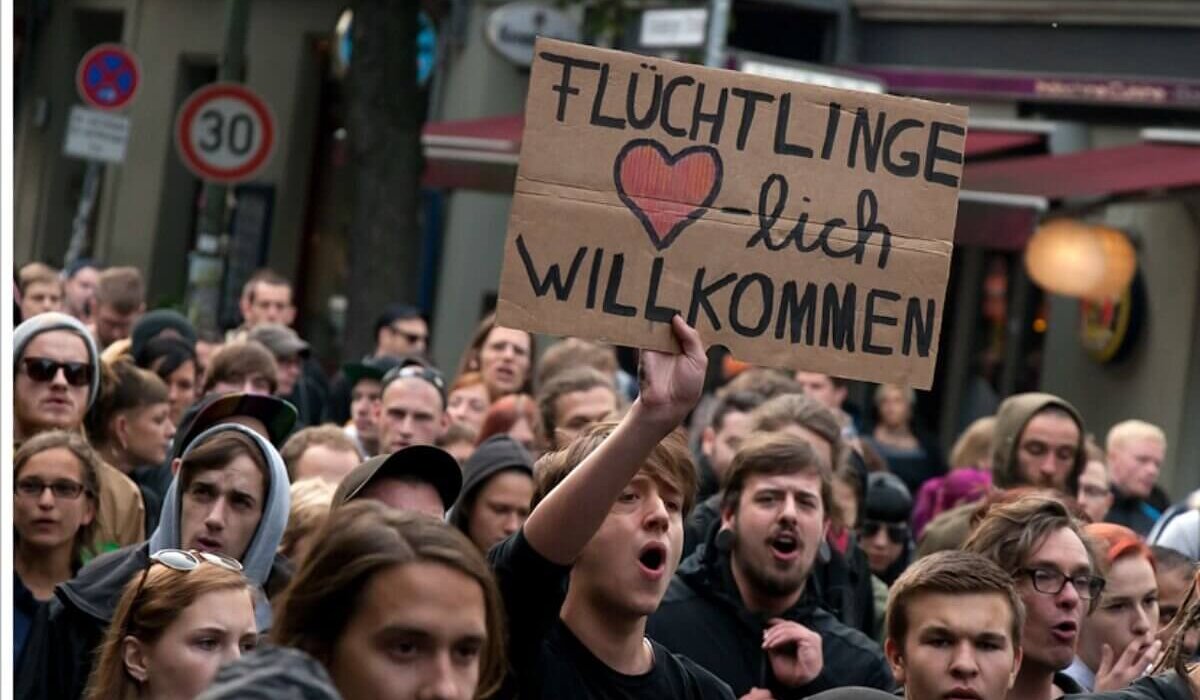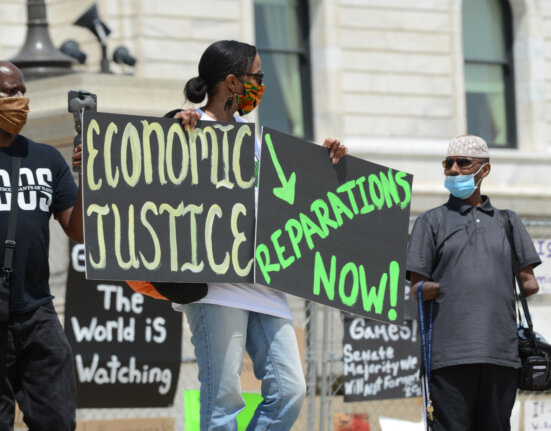Lucas Poy writes about the questions and some of the conclusions of his recently published essay in Labor: Studies of Working Class History on the World Migration Congress of 1926, organized by left-wing labor leaders and social democrats. How have socialists and labor leaders in the “global north” approached the subject of migration? -ed
The consequences of the arrival and integration of immigrants appear to be at the center of public debate in many countries of the so-called “Global North”, often with a feeling of urgency and concern. Remarkably, these discussions delve into topics of interest to labor historians and activists and utilize words and concepts that otherwise only sporadically penetrate mainstream media discourse. Indeed, the “working class” — conspicuously absent from the discussion in times of neoliberalism and “end of history”– appears to have resurfaced. The local working class, at least. Across the political spectrum, we see parties and leaders conveying that feelings of mistrust and apprehension toward immigrants are an inevitable byproduct of competition in the labor and housing markets. Right-wing politicians exploit these sentiments to advocate for restrictive and protectionist measures. Concerned to be losing their electorate, some left-wing parties maintain that a restrictive stance on refugees and labor migrants is the only alternative to losing elections.
Scandinavian social democrats, at times regarded as a source of inspiration by US activists, are a case in point. The Danish government, led by social democrats, recently secured a deal with right-wing parties to prevent foreigners with a suspended sentence to ever become Danish citizens, and decided to establish camps outside Europe where asylum-seekers will have to wait while Danish authorities process their application. In a manifesto published in 2017, Danish socialists called for “a balance between helping people in need and ensuring the coherence of our country, and continuing to be able to afford the high level of welfare provision that characterizes our society”. This Nordic social democratic approach even became a model for right-wing parties elsewhere: in September 2021, for instance, with the support of all parties to the right of the center, the Dutch Parliament passed a motion to “study the Danish asylum and return policies.” The right-wing leading promoter of the motion called Denmark a “guide country,” celebrating that strict migration policies have been “embraced by the left”.
Alas, this embrace is far from new, as one only needs to recall the Workingmen’s Party of California’s campaigns against Chinese immigration in the late 1870s or Australian labor’s staunch support for the so-called “White Australia policy” some decades later. As a matter of fact, over the last 170 years, the famous rallying cry of the Communist Manifesto, “Workers of the world, unite,” remained appealing but elusive, more a vague desire than an actual reality. Class-based loyalties entangled in complicated ways with national, gender, religious, and ethnic identities. Mechanisms of exclusion were rather a rule than an exception.
To be sure, the topic is a goldmine for labor historians. To understand the left’s positions on immigration, we must explore similarities and differences across various countries, regions, and historical periods. Were these stances primarily reactionary responses to right-wing policies and arguments? Or were they aimed at safeguarding the rights of the local labor movement and securing votes among working-class constituencies? Were there deeper underlying reasons rooted in xenophobia and racism?
Historical research, preferably with a global and comparative perspective, is necessary to answer these questions. We need to move away from discussions that are often dominated by biases, factual inaccuracies, and an array of preconceptions.
My current project studies the approaches of socialist and labor parties towards immigrant workers between 1880 and World War II. It interprets the history of social democracy and internationalism, especially the tension between a discourse of color-blind solidarity and a practice where transnational brotherhood was challenged by paternalism, condescension, and racism.

My recent essay published in Labor: Studies in Working Class History, “The ‘World Migration Congress” of 1926 and the Limits of Socialist Internationalism,” is part of this current project. I use the discussions of this Congress of trade unionists and social democrats as a window into perspectives on these issues. What we see is a fascinating and complex stage of global discussions that interweaved ideas of solidarity and internationalism with racist and nativist ideologies. Socialist movements emerged in the last third of the 19th century, an era of intense globalization and movement of capital and labor throughout the world, which coincided with the consolidation of nation-states, imperialist endeavors, and growing nationalism. Socialists shared a sincere internationalist credo: they argued that capitalism was a global system that allowed for the formation of a transnational and united working class. This core perspective underpinned a discourse of color-blind international solidarity, but at the same time, most socialists assumed that the unification of the global working class would only be the outcome of a protracted process. Just as the expansion of capitalism would bring progress to backward regions, they reasoned, it would also convert their inhabitants into proletarians, who would then be “civilized” enough and therefore “organizable” among the international socialist community.
As a result of this approach, before 1914 leading socialist and labor parties in Western imperial powers did not make significant efforts to organize the non-European inhabitants of their colonial territories, and they also struggled with the idea of unrestricted immigration of non-European workers. In fact, they often adopted discourses and practices that drew a “color line” (to borrow W. E. B. DuBois’ concept) between the community of “international labor” and non-European workers from most parts of the world. These approaches were particularly noticeable in white-settler colonies where the immigration of non-European workers became a pivotal point of political debate. These stances did not go uncontested, however, as different groups and leaders envisioned alternative standpoints that questioned this limited internationalism.
World War I and the revolution in Russia led to a major split along the lines of pro- and anti-Bolsheviks. By the early 1920s new organizations appeared, such as the Soviet-backed Third International or Comintern. In 1923, meanwhile, most anti-Communist socialist parties managed to rebuild a transnational organization, the Labour and Socialist International, active until the outbreak of World War II. Transnational networks, and an internationalist discourse, would remain a permanent feature of the socialist tradition in the 20th century. After the Russian revolution, however, as the Comintern expanded its influence in Asia, Africa and Latin America and engaged with emerging anticolonial movements, the gulf between European social democrats and non-European peoples became even wider. My article, which delves into the so-called World Migration Congress of 1926, explores how inter-war social democrats approached the question of migration against this complex backdrop, revealing the stances that were intertwined with colonialism and condescending views of the “colored peoples” of the world.






